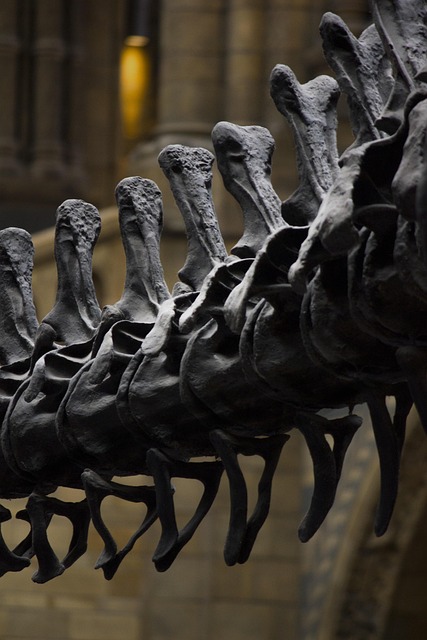In the mid-19th century, Lane County, Oregon, became a bustling hub for gold mining, attracting thousands of prospectors and transforming its landscape. This period saw the rapid growth of vibrant towns fueled by miners staking claims along rivers and creeks. Despite intense competition exhausting many mines within decades, the county's gold rush era remains an integral part of its history, showcasing Oregon's rich mining heritage and leaving behind ghostly remnants of former boomtowns that visitors can still explore today.
“In the heart of Oregon, Lane County experienced a dramatic shift in its lifestyle during the mid-19th century gold rush. The discovery of golden veins transformed the region into a bustling hub for prospectors from all walks of life, each seeking their fortune. This article delves into the rise and fall of Lane County’s gold mining boom, exploring how it reshaped the economic and cultural landscape. From the thriving Oregon gold rush towns to the shifting realities faced by local prospectors, we uncover the enduring legacy left behind by this historic period, including insights into the gold rush economics that defined Lane County’s boomtowns.”
- The Rise and Fall of Lane County's Gold Mining Boom
- Life in Oregon's Gold Rush Towns: Shifting Realities for Lane County Prospectors
- Economic Impacts and Cultural Transformations: A Legacy of Lane County's Gold Rush
The Rise and Fall of Lane County's Gold Mining Boom

The gold rush in Lane County, Oregon, began in the mid-19th century and sparked a dramatic shift in the local lifestyle. Word of rich gold deposits along the rivers and creeks quickly spread, attracting thousands of prospectors from across the country and beyond. This influx transformed small communities into bustling boomtowns, with saloons, general stores, and mineral offices springing up to cater to the growing population. The economy boomed as miners flocked to stake their claims, leading to a period of immense prosperity for the region.
However, the Lane County gold rush was short-lived. As word of the rich finds spread, competition grew fierce, and by the late 1800s, many mines had been exhausted, and the population began to decline. Many prospectors moved on to new strikes, leaving behind ghost towns and abandoned claims. Despite its fall from grace, the gold rush era left an indelible mark on Lane County’s history and remains a significant chapter in the state’s mining heritage, with remnants of those boomtowns still visible today.
Life in Oregon's Gold Rush Towns: Shifting Realities for Lane County Prospectors

Life in Oregon’s Gold Rush Towns: Shifting Realities for Lane County Prospectors
Lane County, Oregon, experienced a significant transformation during the mid-19th century gold rush, particularly in its bustling towns and thriving mining communities. The allure of rich veins of gold drew prospectors from near and far, fueling an economic boom that reshaped the local landscape. These hopeful adventurers, known as Lane County prospectors, flocked to areas like Eugene and Springfield, transforming them into vibrant, if temporary, hubs of activity. The influx of miners led to the rapid development of mining claims and the establishment of several boomtowns, each with its unique character and appeal.
The gold rush economics in Lane County were as diverse as the towns themselves. Some prospectors found immediate success, while others toiled for years, facing challenges from harsh conditions and fierce competition. The social fabric of these communities shifted dramatically, as miners came from all walks of life, bringing with them a mix of cultures and backgrounds. This period witnessed not only the rise of rich mines but also the evolution of local businesses, saloons, and social gatherings that catered to the unique needs and desires of Lane County prospectors.
Economic Impacts and Cultural Transformations: A Legacy of Lane County's Gold Rush

The gold rush in Lane County, Oregon, brought about profound economic impacts and cultural transformations that left an indelible legacy. Prospectors from near and far flocked to the county’s rich mining grounds, igniting a boomtown phenomenon. This influx not only boosted the local economy but also led to the establishment of vibrant communities centered around gold mining activities. The demand for goods and services surged, fostering the growth of businesses and infrastructure. Lane County became a bustling hub where miners, merchants, and entrepreneurs intertwined, creating a unique cultural tapestry.
The economic rise of these gold rush towns attracted diverse populations, each contributing to the county’s vibrant social fabric. Mining claims scattered across the landscape led to intense competition and, subsequently, innovative techniques and technologies. The gold rush economics shaped the region’s history, influencing its development long after the glittering allure of gold began to fade. Today, visitors can still explore remnants of these boomtowns, uncovering stories of perseverance and the enduring spirit that defined Lane County during its glorious gold rush era.
